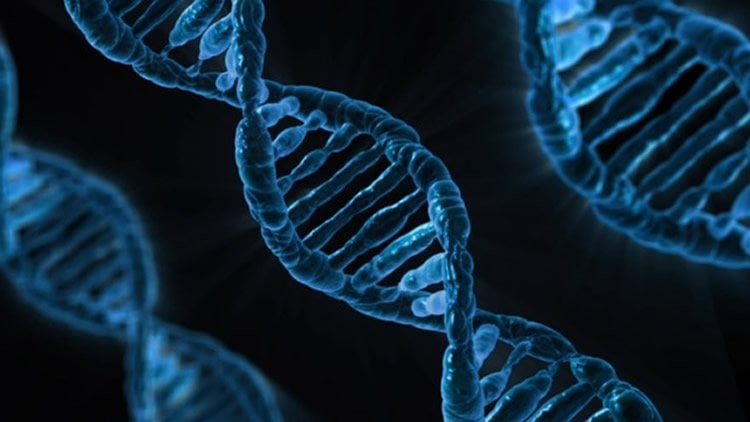Stopping disruptions in cellular “trash removal” brought on by errors in molecular marks on DNA may guard against neurodegenerative diseases like Parkinson’s.
Novel findings from a team led by Van Andel Research Institute (VARI) Professor Gerd Pfeifer, Ph.D., implicate certain epigenetic modifications–marks on the DNA that affect gene regulation without changing the genetic code–in the development of some neurodegenerative diseases. His team has demonstrated how a protein called Tet3FL removes molecules called methyl groups from specific genes, keeping them active and the “trash removal” processes working. Without these vital housekeeping functions, abnormal proteins and other cellular waste can accumulate and cause damage.
“When we looked at the data, Tet3FL was surprisingly specific–we found a relatively small number of genes associated with it, the majority of which are part of the lysosomal and autophagic pathways,” Pfeifer said. “These pathways are responsible for clearing out old and damaged proteins and other cellular components, and have been previously linked to neurodegenerative diseases. Importantly, mutations in one of these genes, GBA, are recognized as the strongest genetic risk factors for developing Parkinson’s. Knowing how these genes are regulated, especially genes like GBA, could help us develop novel treatments for neurodegenerative diseases.”
Brain cells are largely non-dividing, meaning a person has essentially the same set for their entire life while other cells, like skin cells, turn over frequently. When epigenetic marks, such as methyl groups, are inappropriately added to DNA in cells that frequently divide, the negative effect is usually diluted out by removal of these marks during cellular division. However, in non-dividing cells (a group that includes most nerve cells in the brain) the effects of a gene being switched off due to improper methylation can be more profound. This is where Tet3FL comes in–it stays close to a specific site on particular genes and removes methyl groups as needed, maintaining the functionality of those genes and, in effect, potentially acting as a “guardian” against neurodegenerative diseases.

Pfeifer plans to collaborate with other scientists at the Institute, including renowned neuroscientist and Parkinson’s expert Patrik Brundin, M.D., Ph.D., to further explore how Tet3FL may provide protection against neurodegenerative diseases.
“These findings open a new avenue to explore potential new ways to prevent and treat diseases like Parkinson’s,” Brundin said. “I look forward to working with Dr. Pfeifer to further explore how this mechanism could be harnessed to develop new targeted therapies to dramatically improve the quality of life for people with these diseases.”
The study was published in Cell Reports with VARI’s Seung-Gi Jin, Ph.D., as first author. It was conducted in collaboration with VARI’s Piroska E. Szabó, Ph.D., and scientists at Beckman Research Institute of the City of Hope; University of California, Riverside; and the State Key Laboratory of Molecular Biology at the Chinese Academy of Sciences.
Source: Beth Hinshaw Hall – Val Andel Research Institute
Image Source: The image is in the public domain
Original Research: Full open access research for “Tet3 Reads 5-Carboxylcytosine through Its CXXC Domain and Is a Potential Guardian against Neurodegeneration” by Seung-Gi Jin, Zhi-Min Zhang, Thomas L. Dunwell, Matthew R. Harter, Xiwei Wu, Jennifer Johnson, Zheng Li, Jiancheng Liu, Piroska E. Szabó, Qiang Lu, Guo-liang Xu, Jikui Song, and Gerd P. Pfeifer in Cell Reports. Published online January 7 2016 doi:10.1016/j.celrep.2015.12.044
Abstract
Tet3 Reads 5-Carboxylcytosine through Its CXXC Domain and Is a Potential Guardian against Neurodegeneration
Highlights
•The three isoforms of mammalian Tet3 include Tet3FL, Tet3s, and Tet3o
•The CXXC domain of Tet3 is a specific reader of 5-carboxylcytosine at CcaCG sequences
•The crystal structure of the CXXC domain-5caC complex was solved
•Tet3FL in neurons targets genes of the lysosome and base excision repair pathways
Summary
We report that the mammalian 5-methylcytosine (5mC) oxidase Tet3 exists as three major isoforms and characterized the full-length isoform containing an N-terminal CXXC domain (Tet3FL). This CXXC domain binds to unmethylated CpGs, but, unexpectedly, its highest affinity is toward 5-carboxylcytosine (5caC). We determined the crystal structure of the CXXC domain-5caC-DNA complex, revealing the structural basis of the binding specificity of this domain as a reader of CcaCG sequences. Mapping of Tet3FL in neuronal cells shows that Tet3FL is localized precisely at the transcription start sites (TSSs) of genes involved in lysosome function, mRNA processing, and key genes of the base excision repair pathway. Therefore, Tet3FL may function as a regulator of 5caC removal by base excision repair. Active removal of accumulating 5mC from the TSSs of genes coding for lysosomal proteins by Tet3FL in postmitotic neurons of the brain may be important for preventing neurodegenerative diseases.
“Tet3 Reads 5-Carboxylcytosine through Its CXXC Domain and Is a Potential Guardian against Neurodegeneration” by Seung-Gi Jin, Zhi-Min Zhang, Thomas L. Dunwell, Matthew R. Harter, Xiwei Wu, Jennifer Johnson, Zheng Li, Jiancheng Liu, Piroska E. Szabó, Qiang Lu, Guo-liang Xu, Jikui Song, and Gerd P. Pfeifer in Cell Reports. Published online January 7 2016 doi:10.1016/j.celrep.2015.12.044






